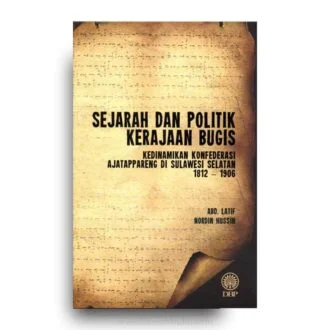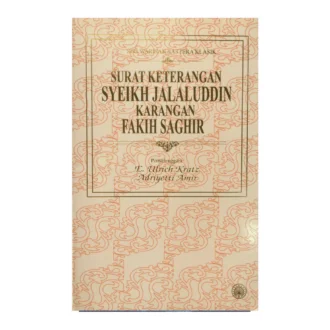To’ Janggut: Legends, Histories, and Perceptions of the 1915 Rebellion in Kelantan deconstructs a popular legend concerning a 1915 uprising against the British rule led by To’ Janggut, or ‘Old Long Beard’ in the Malay state of Kelantan. The book is about a charismatic local Malay leader known as “To’ Janggut”, who staged a rebellion against British rule in the Malayan state of Kelantan in the early twentieth century, and about various accounts of his uprising. The story of To’ Janggut rebellion is recounted in folk tales, newspaper reports and scholarly publications, and the author uses previously classified official reports and hitherto unknown photographs to shed further light on the episode. In his account, incidents presented in one version are revised, contradicted, or denied in others, but as the story unfolds the author also reveals unexpected links between different presentations of events.
In the pages that follow, the “Romance of To’ Janggut” appears in several versions, each drawn from a different source including scholarly interpretations, literary and folk accounts, newspaper reports, photographs, and “hidden” secret and confidential official papers. An examination of this palimpsest reveals ever deepening layers of To’ Janggut’s rebellion, much as the Japanese film director Akita Kurosawa’s film Rashomon shows a murder through the eyes of seven individuals, each of whom saw the event differently. Another model for this book is the French historian Emmanuel Le Roy Ladurie’s Love, Money and Death in the Pays d’Oc (New York: Penguin Books, 1980), a fascinating, bold and imaginative account that bridges the gap between folk literature and history, between fiction and fact. Ladurie’s book examines a popular love story set in rural France that is known to many French-speaking peoples throughout the world. In writing it, he tracked down some 320 different versions of the tale, and through a penetrating analysis of 50 “key” stories along with their variations, and other Occitan oral literature, illuminated not only the content and structures of oral fiction, but also the society and customs of the peasant populations of the Pays d’Oc in the eighteenth century.
The author have also drawn on the work of a variety of scholars doing work in textual analysis and alternative historical genres, especially Timothy Lindsey [The Romance of K’tut Tantri and Indonesia (Kuala Lumpur: Oxford University Press, 1997)], and Lorraine M. Gesick, whose study of a southern Thai folk legend and its several versions is presented in her book In The Land of Lady White Blood: Southern Thailand and the Meaning of History (Ithaca, NY: Southeast Asia Programme, Cornell University, 1995).
Cheah begin by presenting the outlines of the story of To’ Janggut’s rebellion, limiting his account to a bare statement of the facts that are corroborated by all versions of the event. This is followed by an indigenous oral folk account of the Kelantan rising, Peperangan To’ Janggut atau Balasan Derhaka in translation, with a brief commentary that explains how this version of the 1915 rising differs from the official Malay and British accounts of the rising.
In the second part of To’ Janggut: Legends, Histories, and Perceptions of the 1915 Rebellion in Kelantan, the author contrast elements within this folk account with later versions of the event found in newspaper reports, photographs, end a collection of official documents classified “confidential” and “secret”, and only recently made available to the public. In these versions, incidents and images associated with the folk account are variously revised, contradicted, and denied. Many of the materials — memoirs, correspondence and reports written by To’ Janggut’s contemporaries — are stored in government archives. The stories they contain are unknown to the general reading public, and their presentation in this book along with my own interpretations of events constitutes yet another version of the rising, a new and composite one that differs in many particulars from previous accounts.
In the end the mystery of To’ Janggut remains unresolved. The deconstruction or reconstruction of each incident constitutes an act of interpretation and is a form of argumentation. Although we cannot know the ‘truth’ of what actually happened, by comparing and through the interaction of different versions and texts, we can ascertain the goals, beliefs, and perspective embodied in the sources. The “truth” of these new versions is no less problematic than the truth of those that preceded them, and readers are left to form their own speculative histories of the events of 1915 in Kelantan.
Although the 1915 rising was a relatively minor incident in a remote part of rural Kelantan, the episode has captured the imagination of the people of Malaysia. In revisiting the event, Cheah’s purpose is not to establish the facts of what took place but to consider the broader significance of the uprising by reassessing the meanings and functions of history, biography, photography and other genres. Cheah Boon Kheng’s reconstruction of various versions of the incident serves as a form of argumentation, and raises a number of questions. For example, did To’ Janggut rebel against the Sultan, or was he used by the Sultan? Did the Kelantan aristocracy support the Sultan, or were they attempting to unseat him? Was the incident a tax rebellion, or an anti-colonial rising? In the end, the reader is left to ponder which version (if any) can be said to represent historical truth.
















Anonymous (store manager) –
Anonymous (store manager) –
Anonymous (store manager) –
Anonymous (store manager) –